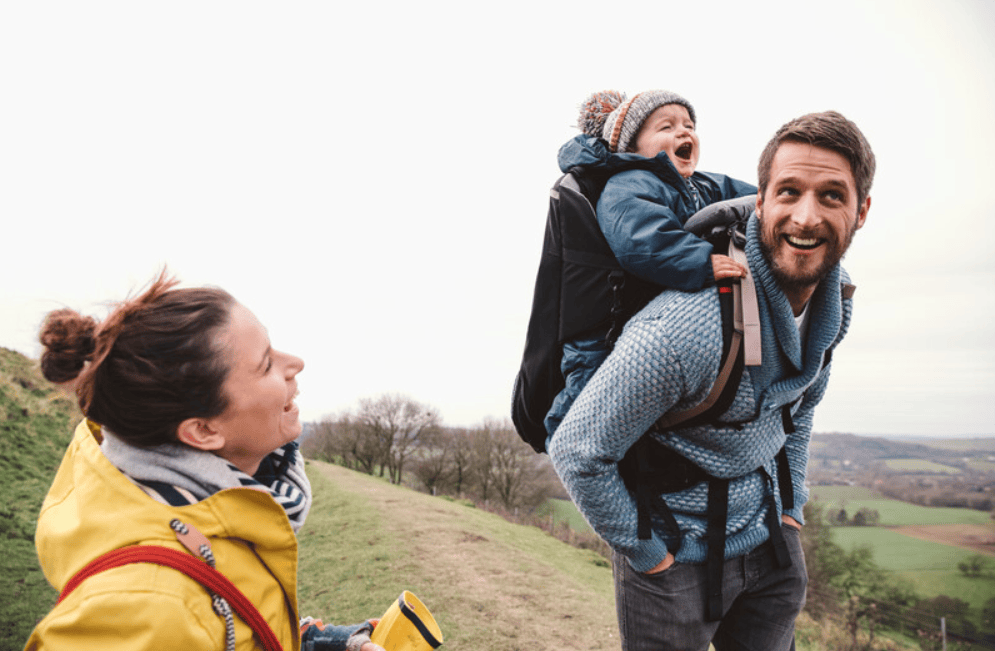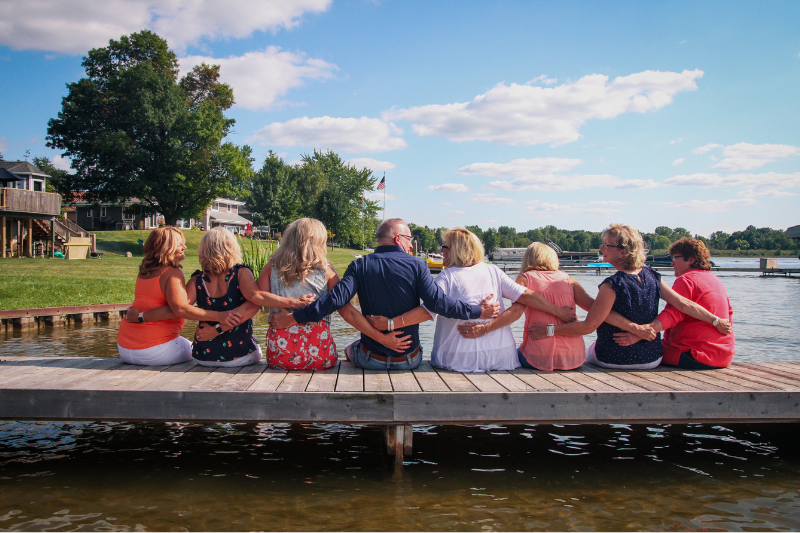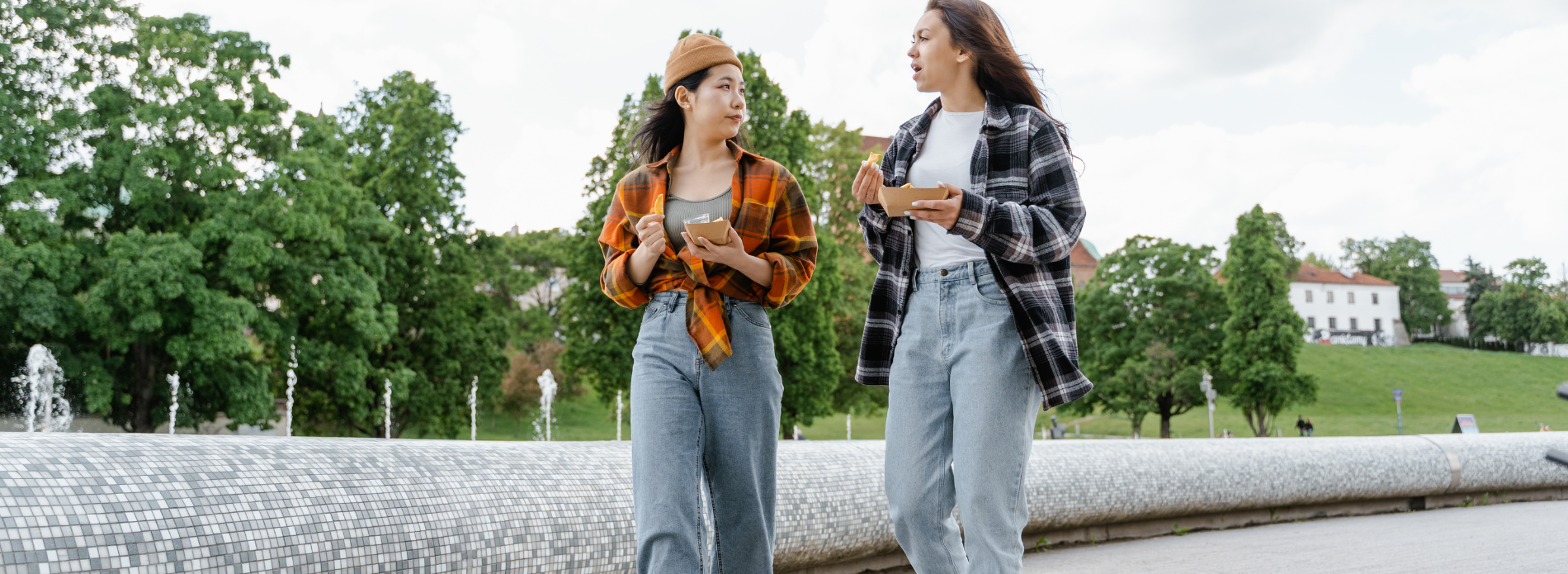The great outdoors is a powerful place. In today’s world where we crave moments of calm and seek out opportunities to de-stress, going for a hike can be a great way to do just this, as well as improve our overall health at the same time.
While physical activity is known to combine physical and mental health benefits, many activities often miss the magic ingredients that hiking offers – fresh air and nature.
We explore the benefits of hiking, and precautions to take before you pull on your walking boots and head outdoors.
What are the key benefits of hiking?
Cardiovascular health
It’s a fantastic way to prove cardiovascular health and give your whole body a good workout. As hiking is across undulating terrains, we have to use our stabiliser muscles and the upper body really comes in to play.
Hiking offers a much more full-bodied workout than walking, especially with a hilly route, as it’s stressing the cardiovascular system while also working your glutes (bottom muscles) and quads (upper leg muscles) to manage the terrain.
While walking is great, hiking provides a more physically challenging style of workout, and its varying nature means it works the body harder.
Mental health benefits
The mental health benefits of hiking are plentiful, and natural environments have been shown to trigger psychological restoration in humans.1
Ultimately, engaging in physical activity outside in the fresh air is good for our mental health; it allows us to de-stress and reduces the risks of depression and the feelings of anxiety.
As humans we’re naturally drawn to outdoor spaces, with hiking providing a cathartic experience.
Add in switching off from technology and putting the world to rights with your hiking companion as you go, and it’s easy to see how going on a hike can have hugely positive impacts on our mental health.
Bone health
Bone health is also supported with hiking due to the activity’s low impact on bones. This makes it an ideal activity for later in life when bone density naturally starts to decrease and you’re looking for an alternative to high impact activities.
Sociable
It can also be a sociable form of exercise. Going with others, be that a partner, a friend or the whole family, can make it an enjoyable way to fit more activity into your day, which means you’re more likely to stick at it.
>Read our article on the benefits of group exercise for more information
Variety
It’s important to keep your exercise regime varied to avoid getting stuck in a rut. Hiking is a great alternative exercise for regular gym-goers who feel their routine may have plateaued a little.
Hiking can be a great alternative to build up your strength in a different way to being in the gym. A 30-minute hike on active recovery days could be enough to flush out the built-up lactic acid in your lower body muscles.
Adaptable
It’s a really adaptable form of exercise. Whether you want a short, flatter 30-minute hiking route or (are physically fit enough for) a four-hour hike in the hills that really tests your fitness.
Hiking is something that everyone can take on. Plus, carrying a rucksack means you can add in some extra weight safely to increase the benefits.
What precautions should I take?
While hiking offers a multitude of benefits, there are also precautions to take. This is especially the case if you’re new to it as an activity, have not exercised in a long time or have muscular or joint problems.
1. Be realistic
As with any new form of exercise, don’t overestimate your capabilities. Start small and build up your distances or the type of terrain.
This way you’ll help to prevent injury and not be put off from the first try – enjoying yourself is one of the best ways to ensure you are more likely to stick at something, so try not to overwhelm yourself on the first go!
2. Set goals
To keep it challenging and give yourself something to work towards. Break things down into manageable chunks and remember to celebrate each time you go a bit further or a little rockier or for just making the time for yourself to get active, you deserve the recognition!
3. Plan your route
This is really important. Not only so you don’t spend valuable hiking time trying to navigate your way, but for your safety and so that you know you're undertaking a route suitable for your ability.
Maps are a great way to physically plan your route and you can take them with you (without relying on GPS!) to make sure you're going to right way.
4. Tell someone
If you’re going alone, make sure others know where you’re going. If you get lost or injured (and don’t get any service on the phone, you’ll no doubt take for emergencies) it’s vital someone knows where you are.
5. Take rest breaks
Hiking can be a rigorous form of exercise depending on your route choice, so making sure you take breaks is crucial – you don’t want to get halfway through and be absolutely exhausted!
But if you are really working up a sweat, do be cautious when taking off a rucksack, as the rapid cooling down could cause a chill.
6. Check the weather forecast
It may be fine when you set off, but the weather can change rapidly, making it potentially difficult to navigate and walking conditions more treacherous than you expected or were prepared for.
If you’re ready to go for a hike, there are a few things we recommend for your kit:
Hiking boots: be sure to break them in before you head off for hours, otherwise you won’t get too far! Try starting off small, on local and familiar terrain in order to break them in.
Having a good, sturdy pair of walking shoes is important for protecting your ankles and providing sufficient grip over varying terrains.
Water: Keeping hydrated is of the upmost importance with any exercise. Be sure to take plenty of water and a little extra, just in case you don’t quite follow the map as intended.
Appropriate clothing: make sure it’s comfortable to walk in, breathable and suitable for any weather. Pack a raincoat even if it’s due to be a sunny day – being caught in a downpour without a waterproof certainly won’t help with the mindful moments you’re looking for.
Sunscreen: because exercising outside means sun exposure. Don’t forget to apply before you go and top up if you’re on a longer hike or day out. For more information, read our article on the top tips for sun protection.
A phone: not to be on, but as a safety net if something does go a little pear-shaped.
High energy snacks: to keep your energy levels topped up as you go, and to have to refuel when enjoying the view.
Hiking is a great way to help boost our physical and mental wellbeing and could be just the thing if you think your journey to feelgood health lies in the great outdoors.
We know that everyone’s health journey is different and what you enjoy is totally unique, but ultimately enjoying yourself is what it’s all about.
References
1 - Restorative Effects of Nature - NIH












